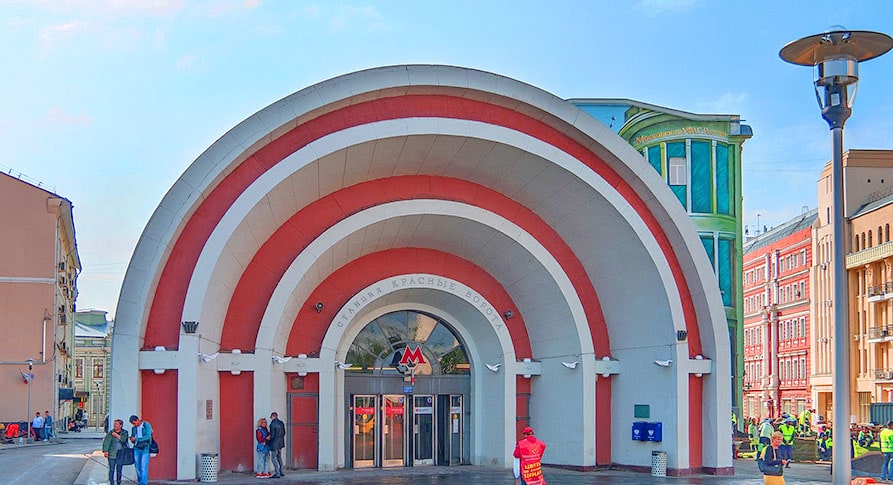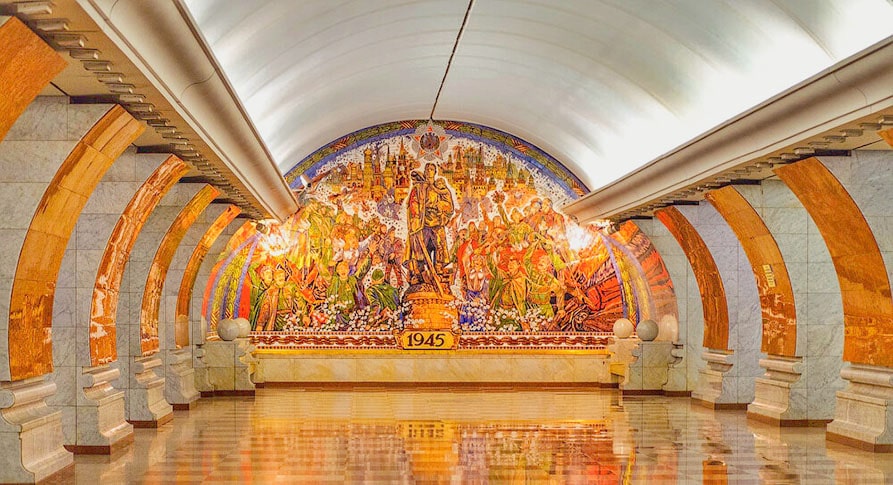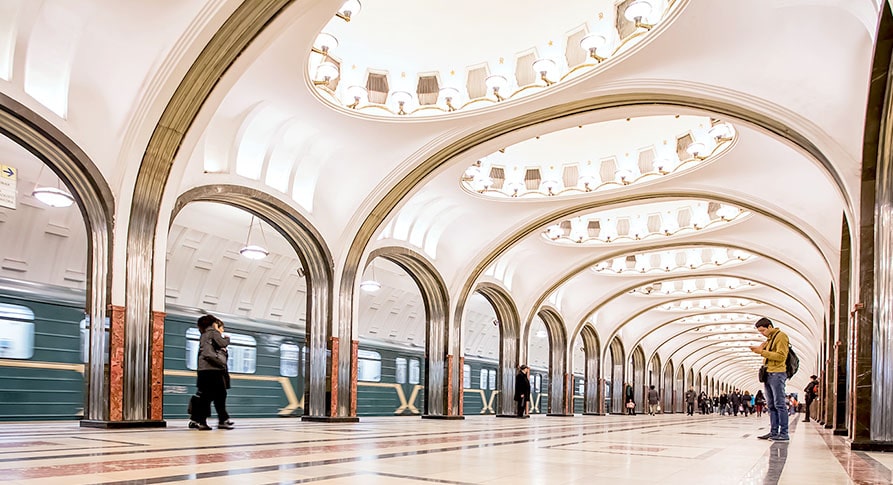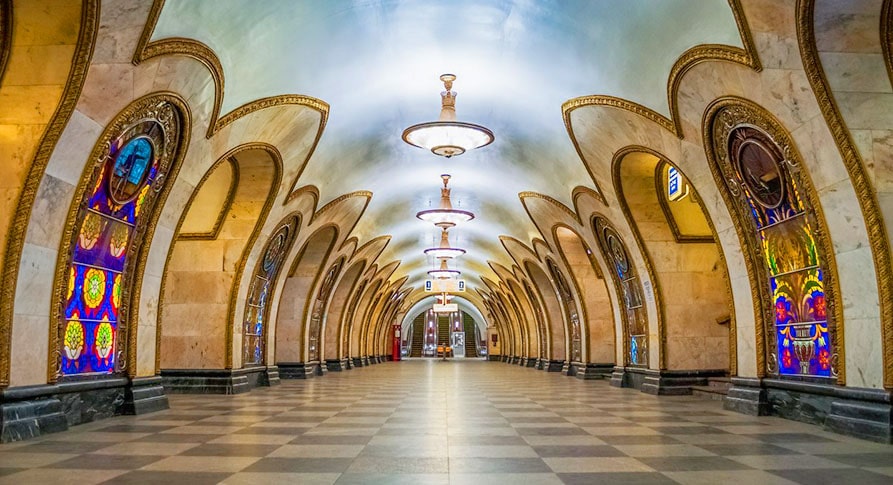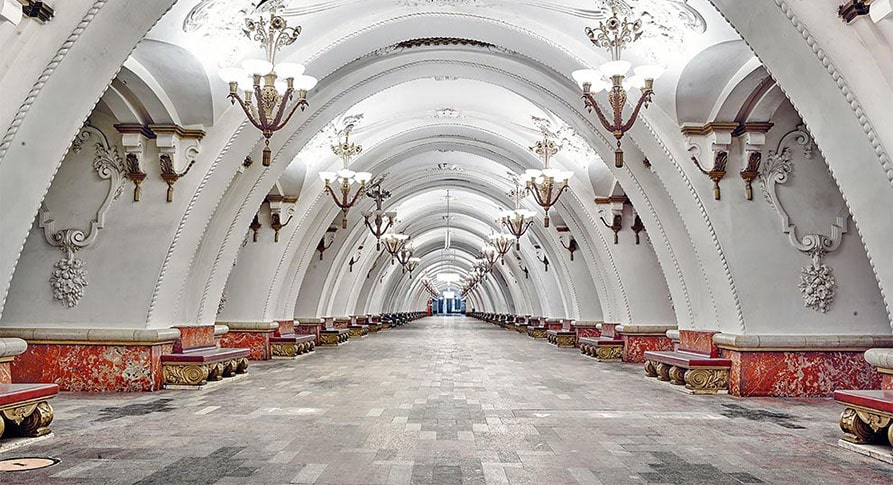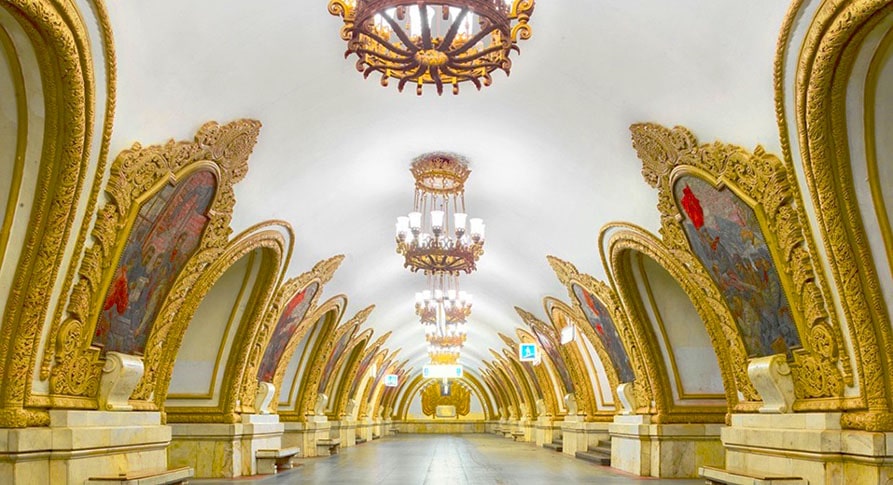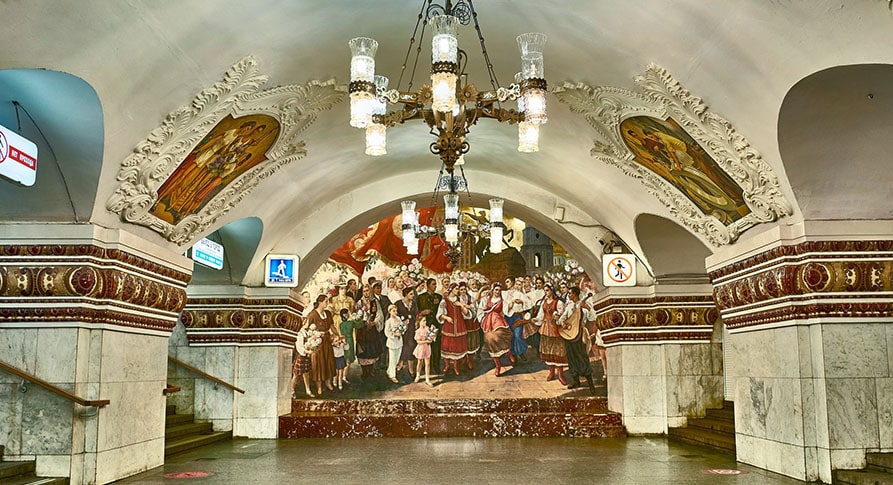Moscow Metro
Welcome to the most beautiful and most accessible museum in Moscow - the Metro.
Muscovites say jokingly: “No matter when you go down to the underground, it is always full of people. People go to work and go home from work... When do they work? - that's a question...” Involve yourself with this unique experience and become a bit Russian with an amazing tour of the huge Moscow underground that never fails to amaze travellers and is an absolute must-see city landmark.
It’s hard to believe but in 1920s Moscow was choking in traffic jams… so it was decided to build the subway. Today Moscow Metro is a real Looking Glass to delve into thick of the Soviet history!
Opened in 1935, it was a symbol of the technological and industrial prowess of the Soviet political system. Once Lazar Kaganovich, head of the project, thought the columns of Kropotkinskaya station were much resembling the lotus flower shape columns of the famous ancient Egyptian temple of Amun in Karnak. He was outraged! So the chief architect calmed down the VIP saying: "They had palaces for the pharaohs, and we have them for the people!" That is the key point about Moscow metro: Russia’s new revolutionary leaders wanted to give everyone a taste of the tsars’ opulent lifestyle. This was the ideology that inspired the Moscow Metro’s architectural splendor.
Today it is world famous for its ornate stations showcasing exquisite socialist realism art in all its monumental beauty and symbolism. Frescoes and mosaics remind commuters of Soviet leaders and the heroic fight of the proletariat for freedom. The most important artists of the period worked on the project, and materials were brought from all over the country, as demonstration of the union of the Soviet nation. Dozens of stations are lavishly decorated with precious materials: more than 20 types of marble, granite, onyx, mural paintings, majolica, stained glass panels, mosaics, carving, forged bronze pieces, and a lot of stunning lifelike statues.
Your local guide will talk you through the symbolism of Soviet architecture, review historical events, decipher propaganda messages and recount urban legends. Moscow metro is full of tales: dramatic, fantastic or amusing. There is a myth about the Circle Line (brown colour), which wasn’t originally planned. It states that during a meeting, Stalin put his cup of coffee on the metro map leaving a brown circle around the city center. And it seemed to be a good idea, so he commissioned the construction of the line. Touching snout of the border guard's dog at the Ploschad’ Revoliutsii (‘Revolution Square’) station is believed to bring luck. That is why it is so polished! The station boasts 76 highly realistic statues. Almost all of them had their living models. For example, this young sailor, whose model was Olympiy Rudakov, a cadet of the nautical school in Leningrad (now St.-Petersburg). Years later, in 1953, being already Captain First Rank, much merited, he was among the Soviet delegates invited for celebration of the coronation of Queen of England Elizabeth II. And Olimpiy had a lucky chance to dance waltz with the new Her Majesty!
Operation and construction of underground was never suspended, even in hard years of WWII. Novoslobodskaya station was completed in May 1945. The WWII was not over yet, but there was a happy feeling of upcoming victory and peace in the air! That's why the decor of station is so bright and festive. By the way, the artist Pavel Korin who designed these splendid intricate pattern stained glass panels, was from a family of hereditary icon painters. Before the Bolshevik revolution of 1917, the Korins used to create holy images and paint temples...
Do you know what Moscow metro and St.Petersburg metro have in common? In late 19th - early 20th century, an outstanding mosaicist Vladimir Frolov lived and worked in the northern capital. His marvelous panels adorned the best civil buildings and cathedrals - including the pearl of St. Petersburg, the divine Church of the Savior on Spilled Blood and St. Isaac 's Cathedral. After the revolution of 1917, Frolov's art was put in the service of the socialist society. When during the WWII the German Nazis sieged Leningrad (St. Petersburg), the artist was not evacuated, he hated the idea to leave his exceptional world's largest collection of smalt, featuring thousands of shades. In autumn 1941, Frolov got an urgent government commission to create a dozen mosaic panels for the Moscow metro, which was continuously under construction. So, in macabre winter of 1941-42, in the inhuman conditions of the blockade, starving, in a chilled workshop scarcely lit by candles, with his fingers stiff with cold he assembled festive mosaics picturing happy peaceful life! In February 1942, the completed artworks were transported by the Road of Life on the frozen Ladoga Lake to the 'Mainland' to get to Moscow. The artist himself died in Leningrad 2 weeks later. And his beautiful images are still looking at us from ceiling plafonds at Novokuznetskaya, Taganskaya and Avtozavodskaya stations.
During WWII, Moscow Metro was used as bomb-proof shelters, like in London. Half a million of Muscovites found refuge underground, and people slept in the carriages that were parked overnight in stations. When airstrikes were especially frequent, some stations housed hospitals, shops and even hairdressing salons, and the Kurskaya station had a working library!
Moscow subway is a real Wonderland with crazy yet amazing labyrinths of stations and puzzle transfers. Each line has a number, name and colour and is known to the Russians colloquially by the colour. Nice to know: you can learn the direction you ride by the announcer’s gender: male voice means you’re going clockwise on the Circle Line or inbound on a radial one, whilst a female voice tells you’re going anti-clockwise or outbound.
Moscow Metro is one of the busiest underground systems in the world with a daily ridership of over 9 million people. It spans the whole of the capital and even some satellite towns around Moscow with over 400 km of track, 14 lines and 241 stations - 48 of these are listed as cultural heritage sites. Around 26 stations were renamed after the collapse of the Soviet Union as well as names of streets, squares and avenues around the city. Main reason for that was, of course, letting go the Communist past.
Moscow Metro is the world record-holder for on-time departures and arrivals. According to the Moscow transport department, its accuracy is 99.99% and the average interval of arrivals during rush hour is just 90 seconds.
On this can't-miss tour you will learn secrets of different stations and hear amazing stories. How does the third world deepest station look like? Which stations sometime at night host ballet performances and wedding ceremonies? Why did Dostoyevskaya station generate a big scandal? Where is a fountain in the subway? How long will it take to ride non-stop ALL metro stations? What ghosts live in the Moscow subway? Why Moscow metro features three Kievskaya stations (!) and how do the locals and tourists find the one they need between them ?? and much more…

